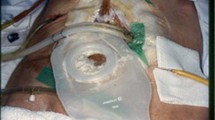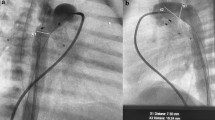Abstract
During a 25-year period (1972–1996), 585 patients with esophageal atresia with or without tracheoesophageal fistula were treated at the Department of Pediatric Surgery, SMS Medical College, Jaipur, India. Increasing awareness of the anomaly has led to early detection and referral with fewer pulmonary complications. For purposes of analysis the period has been divided into five phases, with a steady decline in overall mortality observed from 95.4% in phase 1 to 41% in phase V. Although postoperative complications have also shown a declining trend, delay in diagnosis, prematurity, low birth weight, delayed arrival at the surgical centers, sepsis, pulmonary complications including pnuemonitis, and inadequate nursing care all continue to contribute substantially to lower the survival in developing countries such as ours.
Similar content being viewed by others
Author information
Authors and Affiliations
Additional information
Accepted: 27 September 1999
Rights and permissions
About this article
Cite this article
Sharma, A., Shekhawat, N., Agrawal, L. et al. Esophageal atresia and tracheoesophageal fistula: a review of 25 years' experience. Pediatr Surg Int 16, 478–482 (2000). https://doi.org/10.1007/s003830000393
Issue Date:
DOI: https://doi.org/10.1007/s003830000393




